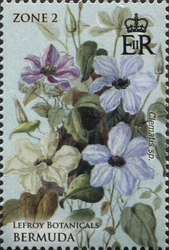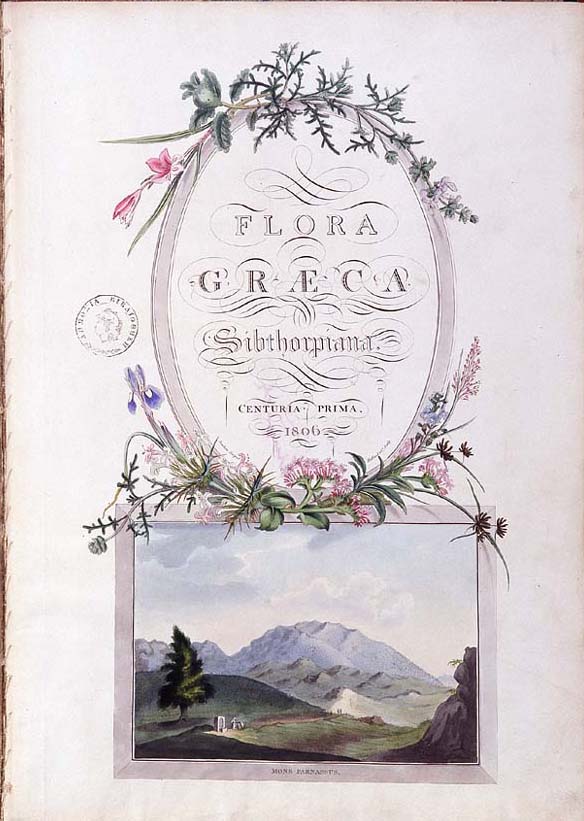Stamp: Clematis sp. (Bermuda 2015)
Clematis sp. (Bermuda 2015)
15 January (Bermuda ) within release Bermuda National Trust - Lefroy Botanicals goes into circulation Stamp Clematis sp. face value Zone 2
| Stamp Clematis sp. in catalogues | |
|---|---|
| WADP Numbering System - WNS: | WAD:BM003.15 |
Stamp is vertical format.
Also in the issue Bermuda National Trust - Lefroy Botanicals:
- Stamp - Hibiscus rosa-sinensis face value Zone 2;
- Stamp - Plumeria rubra face value Zone 2;
- Stamp - Clematis sp. face value Zone 2;
- Stamp - Magnolia grandiflora face value Zone 2;
- Stamp - Cleome speciosa face value Zone 2;
- Stamp - Pereskia aculeata and Pereskia bleo face value Zone 2;
- Stamp - Capsicum baccatum face value Zone 2;
- Stamp - Clitoria ternatea face value Zone 2;
- Stamp - Dendrobium moschatum face value Zone 2;
- Stamp - Pasiflora edulis face value Zone 2;
|
Data entry completed
76%
|
|
|---|---|
| Stamp Clematis sp. in digits | |
| Country: | Bermuda |
| Date: | 2015-01-15 |
| Size: | 28 x 42.5 |
| Perforation: | 14 by 14 |
| Format: | Stamp |
| Face Value: | Zone 2 |
Stamp Clematis sp. it reflects the thematic directions:
Painting is the practice of applying paint, pigment, color or other medium to a solid surface (support base). The medium is commonly applied to the base with a brush, but other implements, such as knives, sponges, and airbrushes, can be used. Painting is a mode of creative expression, and the forms are numerous. Drawing, gesture (as in gestural painting), composition, narration (as in narrative art), or abstraction (as in abstract art), among other aesthetic modes, may serve to manifest the expressive and conceptual intention of the practitioner. Paintings can be naturalistic and representational (as in a still life or landscape painting), photographic, abstract, narrative, symbolistic (as in Symbolist art), emotive (as in Expressionism), or political in nature (as in Artivism). A portion of the history of painting in both Eastern and Western art is dominated by spiritual motifs and ideas. Examples of this kind of painting range from artwork depicting mythological figures on pottery, to Biblical scenes rendered on the interior walls and ceiling of the Sistine Chapel, to scenes from the life of Buddha or other images of Eastern religious origin. In art, the term painting describes both the act and the result of the action. The support for paintings includes such surfaces as walls, paper, canvas, wood, glass, lacquer, clay, leaf, copper and concrete, and the painting may incorporate multiple other materials including sand, clay, paper, plaster, gold leaf, as well as objects. The term painting is also used outside of art as a common trade among craftsmen and builders.
Flora (pl.: floras or florae) is all the plant life present in a particular region or time, generally the naturally occurring (indigenous) native plants. The corresponding term for animals is fauna, and for fungi, it is funga. Sometimes bacteria and fungi are also referred to as flora as in the terms gut flora or skin flora
A flower, sometimes known as a bloom or blossom, is the reproductive structure found in plants that are floral (plants of the division Magnoliophyta, also called angiosperms). The biological function of a flower is to effect reproduction, usually by providing a mechanism for the union of sperm with eggs. Flowers may facilitate outcrossing (fusion of sperm and eggs from different individuals in a population) or allow selfing (fusion of sperm and egg from the same flower). Some flowers produce diaspores without fertilization (parthenocarpy). Flowers contain sporangia and are the site where gametophytes develop. Many flowers have evolved to be attractive to animals, so as to cause them to be vectors for the transfer of pollen. After fertilization, the ovary of the flower develops into fruit containing seeds. In addition to facilitating the reproduction of flowering plants, flowers have long been admired and used by humans to beautify their environment, and also as objects of romance, ritual, religion, medicine and as a source of food.
In European academic traditions, fine art is made primarily for aesthetics or creative expression, distinguishing it from decorative art or applied art, which also has to serve some practical function, such as pottery or most metalwork. In the aesthetic theories developed in the Italian Renaissance, the highest art was that which allowed the full expression and display of the artist's imagination, unrestricted by any of the practical considerations involved in, say, making and decorating a teapot. It was also considered important that making the artwork did not involve dividing the work between different individuals with specialized skills, as might be necessary with a piece of furniture, for example. Even within the fine arts, there was a hierarchy of genres based on the amount of creative imagination required, with history painting placed higher than still life.




